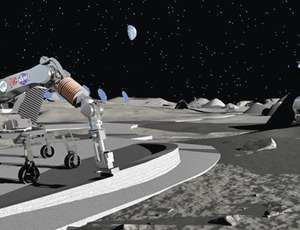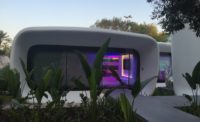
The National Aeronautics and Space Administration is offering $2.25 million in prize money for three competitions, all aimed at dramatically advancing 3D printing in three areas: dwelling design, printing aggregate and printing mechanism.
NASA's Centennial Challenges Program, in partnership with America Makes, allots $50,000 of the prize money for the design of a habitat for astronauts on Mars. The competition is currently open to designers and tinkerers, says John Wilbzynski, deputy director of technology development, America Makes, Youngstown, Ohio. Winners will be announced on Sept. 27, which is the same day the second and third challenges begin.
"We're trying to break down the paradigm of how people think 3D manufacturing can be used," says Sam Ortega Project manager for Centennial Challenges, a subsidiary of NASA. "Many people do the same thing with a new process. We're hoping people will use 3D printing to create a new thing."
The goal is finding designs and innovations that reach outside of modern structural norms and code requirements. "With the flexibility and design freedom of additive construction, why continue to build a square box with a pitched roof?" Asks Wilbzynski. "We're not only looking to apply the techniques developed to Mars, but on Earth, for low-cost housing or natural disaster relief," he says.
Most of the prize money is reserved for the second and third challenges. The winner of the second contest, who will walk away with $1.2 million, must invent a 3D printing aggregate made of waste packaging generated in space and indigenous Martian or terrestrial materials, says Wilbzynski. The aggregate or binding agent must meet structural integrity requirements yet to be determined.
The third competition will net the winner $1 million for inventing an apparatus that uses the aggregate developed in the second contest to print a dwelling. "The winner will demonstrate at a live event and print a dwelling bigger than a doghouse, but smaller than a shed," says Wilbzynski. He adds that the rules for the second and third competitions are not yet fully defined.
Ortega adds that he's not sure if the challenges will be successful, but all Centennial Challenges are designed to have a greater-than-50% chance of success.
"We do a lot of market assessment and market analysis to see how hard we can push the technological envelope and how much money would incentivize people to go after it," he says.




